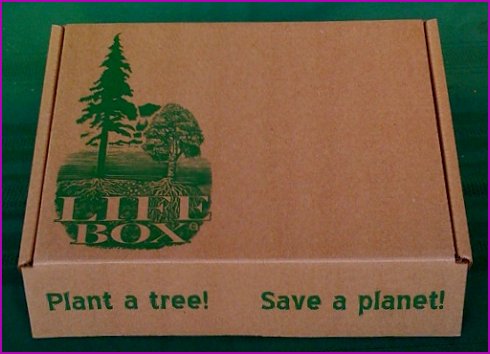    These boxes contain tree seeds and mycorrhizal fungal partners for starting a mini tree nursery that could emerge into a forest ecosystem that could help the earth. Each box contains approximately 140 tree seeds/sq. ft. and may include one or more of the following mixture of tree species and non-toxic beneficial mycorrhizal fungi. Approximately 25% of these trees will survive in 90% of the continental United States. Conifer Trees Picea engelmanni (Engelmann Spruce) / Picea glauca densata (Black Hills Spruce) / Picea mariana (Black Spruce) / Picea pungens glauca (Blue Spruce) / Picea rubens (Red Spruce) / Picea sitchensis (Sitka Spruce) / Pinus resinosa (Red Pine) / Sequoia sempervirens (Coastal Redwood) / Thuja plicata (Western Red Cedar) Deciduous Trees Alnus sinuata (Sitka Alder) / Betula occidentalis (Water Birch) / Morus rubra (White Mulberry) / Sorbus americana (American Mountain Ash) / Ulmus americana (American Elm) Endomycorrhizal Fungi Glomus aggregatum / Glomus etunicatum / Glomus intraradices / Glomus mosseae Ecto Mycorrhizal Fungi Pisolithus tinctorius / Rhizopogon amylopogon / Rhizopogon fulvigleba / Rhizopogon luteolus / Rhizopogon villosullus / Scleroderma cepa / Scleroderma citrinum Here is the math: A 1-2% share of the cardboard box market in the United States could cover up to 25,000 acres of land per week with cardboard. After year 2, the baby trees are planted about 30 feet aart. Out of the hundreds of seeds in each box, if only one survives for 30 years, aproximately one ton of carbon is sequestered. Therefore the potential for coverage with trees coming from Life Boxes expands from 25,000 acres to 25,000,000 acres per week. No matter how you do the math, the implications are massively positive. Once the trees are planted in the ground, you can enter the GPS coordinates & you will be able to see the emerging trees and track carbon credits or offsets at google earth.          |